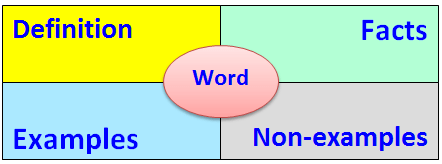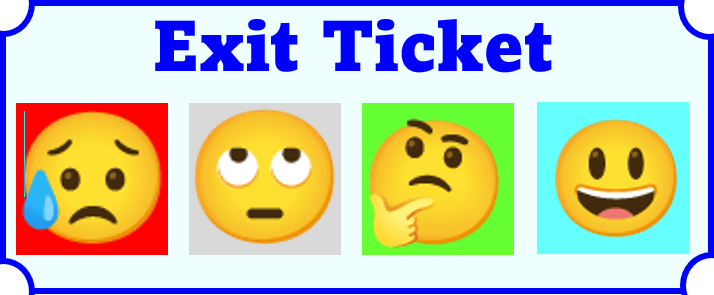Memorial Middle School
- What are the goals/objectives for this lesson?
The student will be able to solve problems involving ratios and proportions, including multiple representations at STAAR level.
Understand and use ratios and proportions in mathematical applications of daily life.
The student will be able to create/solve their own application problem. The problems must meet 6th grade STAAR level, so the rigor and relevance correspond to what the state of Texas mandate.
Performance Indicators:
- Students will be able to use ratio and rate reasoning to solve real-world and mathematical problems with multiple representations.
- Students will be able to solve real-world problems using proportions.
Success Criteria:
Understand and use ratios and proportions in mathematical applications of daily life.
- What do you expect your students to know or do by the end of the lesson?
The student will be able to create/solve their own application problem. During Mathematics academy, students will be able to solve problems that meet 6th grade STAAR level. Students find real world situations a meaningful and engaging activity. It is important because it builds student self-confidence, promotes self-esteem and more awareness of real-world situations.
- How did you determine that this is what these students need to learn?
I teach the Texas Essential Knowledge and Skills (TEKS), which are the state standards for what students should know and be able to do. All teachers must deliver the CARES curriculum with fidelity and according to the district timeline since it is not a suggested curriculum but a required one. Further, to accurately determine what my students need to learn, at the beginning of every school year, during the second day of classes, I determine the level of proficiency of all my students by applying a diagnostic test to identify the level of my students’ knowledge to be able to plan accordingly. On a daily/weekly basis, depending of the complexity of the topic covered, I deliver and monitor specific questioning and short quizzes to get appropriate feedback to adjust and modify my learning objectives to improve students’ academic performance.
- What activities will you and your students be doing? How will they be differentiated for student learners?
Students will be creating and solving their own real applications in a daily life. They will select their level of complexity, resources, and approaches to provide their justification and solutions. During math academies they will be solving STAAR level problems to make sure the assignments have the rigor and relevance required by the TEA. Students will be solving proportions problems that include ratios, equivalent ratios, proportions, scale factor, and multiple representations at STAAR level of proficiency (6.4 TEKS).
Students will be operating at DEEP CONTENT KNOWLEDGE (Level 4): Students will solve their problems connected to the 6.4 TEKS by using strategies beyond their grade level (they will present approaches from 6th, 7th, and 8th grade level) to verify their solutions.
I believe that we must avoid personal perceptions about the rigor or relevance of students’ projects and consult Bloom’s taxonomy, the Texas knowledge and skills (TEKS), and the rubric of T-TESS that define the rigor and relevance taking in consideration: the level of functioning, the actions, and what can be considered a product created by students.
Differentiated instruction for all students’ learning needs:
I provide Word Banks for my LEP and Sped students. To view an example for this lesson, click on :
- RATIOS WORD BANK L/S
- RATIOS AND PROPORTIONS REVIEW L/S
- RATE AND PROPORTION VOCABULARY
- RATIO AND RATE VOCABULARY
- SCALE FACTOR ANCHOR CHART
- I offer video explanations with a simplified language for my LEP students. To view 37 examples for this lesson, click on: PROPORTIONS VIDEOS
- I modify the tests for L/S (LEP and Sped): I make a simplified language version of the test. To view 3 examples for this lesson, click on:
- I test key concepts or main ideas through Mini assessments. To view an example for this lesson, click on:
RATIOS, RATES AND PROPORTIONS Mini-Assessment L/S
RATIOS, RATES AND PROPORTIONS GT
- I simplify instructions and rewrite directions at an appropriate reading level.
- I provide extended time for my LEP and Sped students.
- I reduce the number of items per page.
- I offer a calculator when appropriate
- I pre-teach new concepts and vocabulary
- I give notes and videos for each lesson
- I implement small group (providing explanations in students’ native language) and one-on-one instruction.
- I provide preferential seating.
- I gather feedback from students to monitor and adjust my instruction in three different ways. Click on the links below to view the examples.
Given the immediate feedback I get from my websites, I systematically gather input from students in order to monitor and adjust instruction; hence, my activities respond to understandable differences in student needs. To help you understand the way I work for my students, I would mention that throughout my daily/weekly lessons (depending on the complexity of the topic), I adjust instruction and activities to maintain student engagement and performance because the technology resources I have developed for over a decade allows me to do so. I want to set clear that I have a platform that delivers instruction with REAL TIME feedback (distinguished level needed only timely, and the feedback I provided is in real time!) to every student using self-graded interactive quizzes, randomly delivered to every student by ID/date.
My classes show a high level of differentiation and monitor and adjust since my instructional strategies are supported (with more than 240 videos (which covered the topics from basic trough advanced level) , 220 PowerPoint presentations, more than 700 interactive quizzes that are randomly delivered to all my students (a different set for every student!), and a Mathematics electronic book I wrote in 2015 with more than 600 exercises/examples with different level of complexity) where students can work at their own pace and level of capability. Every student is accountable for his/her progress since I provide an individual electronic portfolio. All the data and assessments scores are reported in real-time.
Since I am applying blended learning to deliver instruction, my students can learn anytime, anywhere and at their own pace, and consequently, I consistently provide my students inside and outside the classroom (presential or virtual) with the differentiation that address the individual needs of all students. Further, I consistently monitor the quality of student participation and performance not only in a subjective but objective manner, through the real-time immediate feedback I receive from my platform. I also, have excellent communication with my students and receive daily reports from assignments and homework in real-time from my platform. Since some of the students’ signs of confusion or disengagement, are that students start failing to bring their homework or do not complete assignments during class.
I have invested more than a decade to keep my mathematics website updated, not only with the TEKS needed to be covered, but also with the most modern technologies, like having the interchange of data through a dedicated cloud and not by a server, hence the speed and interchange of data can be made in real time and the updating of all students’ electronic portfolio being supported. This also implies a monthly fee that I have been gladly covering to help many teachers that have been using my resource free of charge across the world.
- How will the resources and materials that you select be used to enhance students’ understanding of the content? Please describe the resources that will be used:
|
Lesson Frame
|
The problem of the Day
|
Practice
|
|
We will APPLY PROPORTIONS in real-world situations. I will EXPLAIN to my partner in some ways that PROPORTIONS are used in my home. |
||
|
Help Topics
|
Journal |
Spiraling
|
|
VIDEOS:
|
Create and solve your own problem by applying proportions in real life situation. |
|
|
Assessment
|
Essential Questions
|
Vocabulary
|
|
Observation, Self-graded quizzes, and Journal
|
How do I represent and/or solve real-world and mathematical problems using rates, ratios, and/or percents
|
Discount, Tax, Percent of change, Proportional rates, cross-products, proportions, equivalent ratios, solving a proportion
|
- Traditional resources: I will let the students use “low tech”(mini whiteboards and/or notebooks. They will send me the screenshots of their work and/or showing their work through their cameras by using Kami/Jamboard/my Math website.
- Technology: I will use my Mathematics blending learning Website. All mathematical resources needed as: word wall, vocabulary, anchor charts, videos, presentations, quizzes, mini-assessments, worksheets, among other resources are available for all my students anywhere, anytime and these resources are not just placed on a wall inside a classroom. My blog has more than 750 interactive-self-graded quizzes and more than 250 videos that includes different levels of complexity and covers 6th, 7th and 8th grades. Students can use this resource using the most popular platforms, anytime, anywhere and at their own pace. I would like to emphasize that I have not created my own curriculum, what I created is a mathematics website—a teacher’s supplemental resource—that supports the implementation of the district’s curriculum. I believe that my freedom within that is to use my supplemental resources that enable the delivery of that curriculum. My students have been taught with the rigor and relevance needed to be successful in state assessments, and this assertion is easily verifiable through STAAR results saved at DMAC.
- How will you assess student learning? How will you know if your lesson is successful for all groups of students?
I have been successfully applied my teaching-learning method throughout the years that considers immediate feedback to the student. My platform provides a complete electronic portfolio for every student. I assess my students on a daily basis, hence I do know when my students learn the concept because their grades will back up this fact. I have been applying a successful simple teaching technique: I do, we do, they do the self-graded quizzes for every specific topic. The STAAR results back up my assertion. Please see the attachment. Mini-assessments (with modifications for LEP and Sped ed students).
- How will you monitor/address classroom rules and procedures during the lesson?
At the beginning of the school year (right after the first two weeks) of rehearsing the classroom rules and procedures of the school year, students must be self-directed. Nevertheless, I would remind students about classroom rules and procedures if needed in a fair, equitable, and consistent way.
I do know that students behave better when they feel cared about, and they are engaged in a meaningful activity that is the main reason that I have no discipline issues in the classroom.
This form was completed and discussed prior to the Formal Announced Observation scheduled for:
Date/Period: Thursday, April 14, 2022/ second period class
Teacher Signature Observer’s Signature


